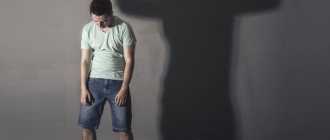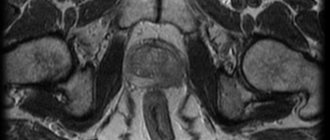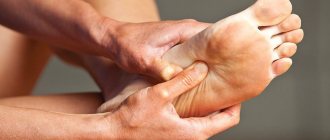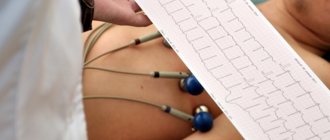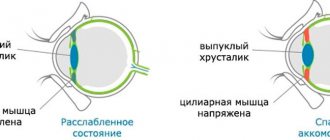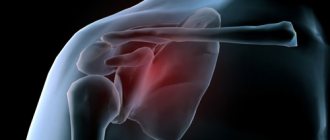A headache in the back of the head is not always harmless; it is often a symptom of a serious illness. If it occurs suddenly or, in medical terms, acutely, then the reasons for its appearance may be not only neurological, but also vascular or even infectious. In such cases, you should seek medical help immediately.
Chronic pain in the occipital region deserves deeper consideration, since many often do not take it seriously and try to eliminate it with the help of conventional painkillers. Such pain periodically makes itself felt and reduces the quality of life at the time of its occurrence. Most often, patients can trace a clear connection between its occurrence and the action of a specific factor. For some, it may occur after a long stay in an uncomfortable position, a sharp turn of the head, or microtrauma. This indicates the need to look for the cause of the disorder in pathological changes in the musculoskeletal system, in particular the cervical spine.
Causes of pain in the back of the head and associated symptoms
An occipital headache is described as dull, paroxysmal, of moderate intensity and lasting from several hours to a day. It occurs regularly and is usually associated with the action of an irritating factor:
- long rides in the subway while standing with support from a high handrail;
- long work at the computer;
- carrying heavy objects;
- stress, including quarrels with loved ones;
- head blows.
Worry should be a decrease in visual acuity at the time of pain, nausea and vomiting, a weak effect or its absence when taking analgesics.
In most cases, this is due to the development of:
- neuralgia of the occipital nerve;
- neck muscle myositis;
- osteochondrosis of the cervical spine, protrusion and intervertebral hernia.
Occipital neuralgia
The disease most often manifests itself as a violation of the sensitivity of the scalp in the area of the occipital nerve. There are two types of occipital neuralgia:
- Paroxysmal or paroxysmal - manifested by severe throbbing pain spreading to the crown, temple and even the eyeball. Most often, symptoms are present on only one side of the head, and the pain initially begins below the back of the head, but quickly spreads.
- Constant – accompanied by moderate pain, which periodically intensifies.
Pain with occipital neuralgia appears with varying frequency and, depending on the duration, has a different character. Thus, constant pain is usually aching and lasts from several hours to a day, while paroxysmal pain can last a couple of minutes or hours, but be so intense that the person will not be able to work. The spread of pain to the neck, ear and eye areas aggravates the overall picture of the disease.
During the interictal period, the quality of life is restored, the performance of daily functions returns to normal levels.
The most common causes of occipital neuralgia are chronic muscle spasm during prolonged forced posture, cervical injuries and their consequences, and hypothermia.
Osteochondrosis of the cervical spine and its complications
This is a chronic disease characterized by constant, steady progression. When it occurs, degenerative-dystrophic osteochondral changes occur, affecting the intervertebral discs and the vertebrae adjacent to them.
At the initial stage, osteochondrosis of the cervical spine is manifested by discomfort, limitation of movements, and pain in the neck. Subsequently, the pain intensifies, becomes aching, and a headache appears. Darkening in the eyes, flickering, the appearance of “spots” and colored spots before the eyes may also be observed.
The final stage in the progression of osteochondrosis of the cervical spine is the appearance of protrusions and herniations of intervertebral discs. Protrusion is a protrusion of the intervertebral disc, but the fibrous ring does not rupture. A hernia is already a formation, which is characterized by rupture of the fibrous ring with prolapse of the nucleus pulposus of the intervertebral disc into the spinal canal.
Neurologists divide the symptoms of osteochondrosis into reflex and radicular:
- Reflex symptoms of cervical osteochondrosis are characterized by pain in the neck and occipital region in the morning. The pain is aching in nature. They are usually permanent and can be accompanied by dizziness, difficulty moving in the cervical spine, ringing in the ears and even hearing loss.
- The radicular symptoms of cervical osteochondrosis are so named because each spinal nerve branches and approaches a specific segment for the innervation of which it is responsible. This is called segmental innervation. This can be manifested by a change in sensitivity in a certain area (segment), muscle weakness, decreased reflexes and pain shooting into the back of the head.
Most often, radicular syndrome with irradiation of pain to the back of the head is observed with damage to the disc located between the 2nd and 3rd vertebrae.
Cervical myositis
Myositis of the neck muscles is inflammation in the muscles of the neck and shoulder girdle. The reason for its development is hypothermia, atypical physical activity, and prolonged stay in an uncomfortable position.
The pathology is manifested by pain in the neck and occipital region of the head, which can be one-sided. Any rotation of the neck causes increased pain. In some cases, redness may appear at the site of the inflammatory process and the temperature may rise locally.
As a rule, myositis is directly related to a damaging factor. Therefore, when carrying out differential diagnosis, the doctor is interested in the circumstances of the appearance of pain, the so-called medical history. This will greatly facilitate the diagnosis and help prescribe optimal treatment.
Muscle tension
Tension pain. This type of pain occurs during stress, prolonged sedentary work, or forced uncomfortable positions. Usually the pain is moderate, diffuse, spreads to the back of the head, then rises to the top of the neck, moving to its base.
Neck muscles and localization of muscle tension pain
Muscle pain subsides, and the general condition improves after sleep and rest; A contrast shower, massaging the back of the head and neck, and massage of the collar area may help. When stressed, it is recommended to use sedatives, get enough sleep, and eat well with the addition of B vitamins and magnesium.
Diagnostics
First of all, you should contact a therapist and describe the disturbing symptoms. The doctor will immediately be able to:
- measure blood pressure, because such complaints may be the cause of the onset of a hypertensive crisis;
- determine the pulse rate and decide to take an electrocardiogram to exclude cardiac arrhythmias;
- palpate paravertebral points and spinous processes, identifying painful sensations in the spine.
If pressure and heart rate are within normal limits, and changes are detected in the spine, further diagnostic measures are necessary and consultation with a neurologist is necessary.
In the absence of signs of cardiovascular disorders, to accurately determine the causes of a headache in the back of the head and select effective remedies to eliminate it, you need to consult a neurologist. A doctor’s appointment includes clarification of the complaint, collection of a history of the development of the disease, as well as clarification of the presence of a hereditary predisposition to certain disorders. At the first consultation, the neurologist will set the level of pain on a visual analogue scale (VAS), check pain points in the paravertebral areas and along the peripheral nerve trunks. A detailed neurological examination is also required, during which the following is assessed:
- patient position;
- level of consciousness;
- presence of signs of injury;
- breathing rhythm;
- eye movement and pupil size;
- muscle tone of the face, tongue, pharynx;
- hearing level;
- stiff neck;
- the amount of muscle tone on both sides of the body;
- presence of limited active and passive movements;
- tendon reflexes;
- coordination of movements;
- presence of sensory disturbances.
The examination will allow us to make a preliminary diagnosis and prescribe those research methods that will most help establish the final diagnosis and prescribe treatment.
Despite the fact that the main cause of headaches in the back of the head is diseases of the spine, changes in the brain itself cannot be ruled out. Therefore, electroencephalography (EEG) and even MRI of the brain are sometimes indicated.
X-ray of the cervical spine
X-ray of the cervical spine is a routine diagnostic procedure and does not require a long time. As a rule, the study itself lasts no more than 3-5 minutes.
X-rays of the cervical spine are taken in an upright position with the patient sitting or standing. This is necessary to obtain images under natural physiological stress.
A functional x-ray examination of the spine is often indicated. It allows you to register disturbances in the motor function of intervertebral discs at earlier stages of pathological processes, and to identify forward or backward displacement of the vertebrae. The essence of the study is to take radiographs of the cervical spine with maximum lateral tilt in the direct projection or maximum flexion and extension in the lateral projection.
Displacement of the vertebrae indicates a loss of the fixation ability of the disc, that is, the initial manifestations of osteochondrosis.
MRI
MRI diagnostics are carried out in specially organized rooms. No special preparation is required to carry it out. However, the research procedure itself will take more time than, for example, x-ray diagnostics. To do this, you will need to set aside about an hour in your schedule.
This study has become widespread due to its high information content and the possibility of making a diagnosis in the early stages of the disease. When examining the cervical spine, it is possible to assess the condition of the cervical vertebrae, intervertebral discs, adjacent soft tissues, nerves, blood vessels and the spinal cord. The area of study can be examined down to a millimeter, which helps identify pathology in the early stages. The changes revealed by this diagnostic method coincide with the X-ray ones: a decrease in the height of the vertebra and intervertebral foramina, changes in the intervertebral discs, protrusion and hernia.
Ultrasound of head and neck vessels
Ultrasound of the vessels of the head and neck is a common diagnostic method that does not require special preparation. It takes about 20 minutes and the result is given by the ultrasound doctor immediately after the procedure.
The method allows you to assess the condition of the inner wall of the vessel, the speed of blood flow and makes it possible to conduct functional tests. Most often it is used to identify developmental anomalies, the presence of atherosclerotic plaques leading to narrowing of their lumen, the presence of external compression, including intervertebral hernias or deformed vertebrae. Ultrasound results complement MRI.
Examination methods
If the occipital part of the head on the left often hurts, it is important to undergo a full diagnosis. During the initial examination, the therapist prescribes additional examinations from specialized specialists, as well as the necessary tests:
- blood tests to determine its composition, identify viral and bacterial infections and obtain other indicators;
- X-ray or MRI of the cervical spine if disease in this area is suspected;
- examination of the vessels of the neck and head using Dopplerography - ultrasound diagnostics using a contrast agent;
- MRI, CT scan of the brain is an accurate, informative technique for detecting neoplasms, hemorrhages and other pathologies that can cause headaches;
- specific examinations by a neurologist, traumatologist, ophthalmologist and other specialized specialists according to indications.
The Clinical Institute of the Brain has all the necessary conditions for diagnosing diseases that are accompanied by headaches. Accurate test results, high-quality modern equipment, many years of experience of specialists are the main advantages of the center.
Treatment of headaches in the back of the head
Therapy for any disease is divided into:
- etiological – impact on the very cause of the violation;
- pathogenetic – measures to prevent the progression of the disease, consisting in interrupting cause-and-effect relationships;
- symptomatic – a set of measures aimed at improving the patient’s condition, eliminating symptoms and restoring normal quality of life.
Therefore, treatment is always comprehensive. If the cause of a headache in the back of the head is a disease of the spine, patients are usually prescribed:
- drug therapy;
- physiotherapy;
- physiotherapy;
- manual therapy.
In some cases, kinesio taping is used. But almost always, patients are advised to reconsider their lifestyle and eliminate triggers that provoke not only the appearance of pain, but also contribute to the progression of existing pathological changes. Lifestyle correction is carried out strictly individually. In some cases, limiting physical activity is indicated, in others, especially for office workers, increasing it. But it is always recommended to avoid sudden movements in the cervical spine.
To prevent the progression of pathological changes in the cervical spine, it is worth purchasing an orthopedic pillow. The main thing is to choose a quality product.
Drug therapy
The selection of a set of medications is carried out strictly individually, taking into account not only the nature of the detected disorder, but also concomitant diseases. The doctor evaluates the presence of contraindications for prescribing a particular drug, so it is necessary to strictly follow only his recommendations and not self-medicate. The main groups of drugs indicated for most patients are:
- non-steroidal anti-inflammatory drugs (NSAIDs);
- muscle relaxants;
- chondroprotectors;
- means to improve blood circulation;
- corticosteroids;
- B vitamins.
Manual therapy
Manual therapy takes a leading place in the treatment of diseases of the spine and the elimination of headaches in the back of the head. But its implementation requires highly qualified doctors performing it. It is a technique of gentle physical impact with hands on all affected structures of the neck: muscles, bones, ligaments. The nature of treatment depends on the severity of the disease.
The goal of manual therapy is to eliminate the causes of the development of spinal pathologies, prevent the reappearance of painful sensations and their progression.
Manual therapy is aimed at:
- relieving muscle spasms, which contributes to the almost complete elimination of painful sensations;
- stimulation of metabolic processes by improving blood flow around the affected disc and restoring lymphatic drainage;
- restoration of elasticity of tendons and ligaments, which helps to increase mobility of the cervical spine;
- restoration of the correct position of the vertebrae, the distance between them, which reduces the load on the intervertebral discs;
- release of compressed nerve roots and elimination of neurological complications, which leads to a significant improvement in general condition and elimination of pain.
Physiotherapy
Physiotherapy used to relieve headaches in the back of the head includes:
- electrophoresis;
- amplipulse therapy;
- magnetic therapy;
- laser therapy;
- ultraphonophoresis.
Exposure to physical factors helps improve blood supply to damaged tissue, improve lymph flow, relieve swelling and eliminate pain.
Exercise therapy
Physical therapy is one of the most effective ways to eliminate occipital headaches. Thanks to regular exercise, muscles are strengthened and blood circulation in the affected intervertebral discs and vertebrae is improved.
Exercise therapy pursues general and specific objectives. General ones are aimed at strengthening the whole body, improving blood circulation in the affected area, and reducing the intensity of pain. But, more importantly, for patients with frequent pain in the back of the head, systematic physical therapy exercises contribute to:
- reducing pain in the occipital region, neck, shoulder joint;
- restoration of range of motion in the involved joints;
- prevention of dizziness;
- strengthening the neck muscles.
Sets of exercises are prepared by a physical therapy specialist. Initially, it is recommended to conduct classes in special groups or individually under the supervision of an instructor. This is important, as a specialist will help you master the correct technique for performing exercises and select the optimal load.
In the future, you can study at home in a comfortable environment. But you should always avoid haste and sudden movements. Before performing a set of exercises, it is necessary to warm up in order to prepare the muscles and ligaments for performing special exercises and not getting injured.
The main task of exercise therapy is to reduce or eliminate compression of the spinal roots and improve nutrition of the tissues of the neck, shoulder girdle and upper extremities. The complex often includes exercises to increase the stability of the vestibular apparatus. Swing movements are performed using clubs, balls, and weights. Typically, the lesson lasts 20–30 minutes.
An important condition for the effectiveness of exercise therapy is the systematicity of classes. They must be carried out daily.
Kinesio taping
Clinical studies have shown that the mechanism of action of kinesio taping is based on the creation of favorable conditions for organizing self-healing, namely:
- normalization of microcirculation in connective tissue and subcutaneous fatty tissue;
- reduction of pain syndrome;
- restoration of functional muscle activity;
- optimization of the transmission of nerve impulses at the segmental level.
There are very few contraindications for the use of tapes: skin diseases in the affected area, the first trimester of pregnancy, individual intolerance to the adhesive composition. Therefore, their use in treating the causes of headaches in the back of the head is a good tool in the arsenal of a neurologist.
Tape is industrially cut elastic adhesive tapes on paper. They come in different colors and shapes according to the area of the body being used. Kinesio tapes are applied by a doctor to the damaged area using a specific technique.
Thus, a headache in the back of the head can be a sign of the development of a serious illness. But you should not self-medicate, since the tactics of patient management directly depend on the nature of the disorders, concomitant diseases, age and even the level of physical fitness. Therefore, if you often experience headaches in the back of your head, you should make an appointment with a neurologist. This will be the main step towards recovery!
5 1 vote
Article rating
The back of the head hurts when blood pressure fluctuates. Treatment
High blood pressure is indicated when values above 140/90 millimeters of mercury are recorded. WHO estimates that hypertension affects 10 to 30% of the population in different countries. Only a third of them went to see a doctor, and only a third of those who did take medications prescribed by the doctor. The rest suffer from headaches, take analgesics, but do not associate their condition with hypertension.
Arterial hypertension is divided into primary - essential and secondary, caused by the pathology of other organs and systems:
- renal,
- endocrine,
- pulmogenic,
- hemodynamic,
- central.
In this case, antihypertensive drugs help.
Prevention
Often, after quick relief or after the unpleasant sensations in the head subside on their own, a person calms down and does not take any measures to prevent a repeat attack. At the same time, a radical revision of your entire lifestyle is the most important step towards good health.
Therapeutic measures to eliminate heaviness in the head must necessarily be supplemented by normalizing the work and rest regime. The duration of sleep should be limited to 8 hours, and time for physical activity should be included in the daily routine. It is necessary to spend more time in the fresh air and, if possible, give up bad habits.
Only such an integrated approach to solving the problem will help you get rid of the heaviness in your head and maintain the clarity of consciousness and thinking necessary for a full life.
Sign up at the MART medical center in St. Petersburg (see map) by calling 8 or leave a request on the website.
